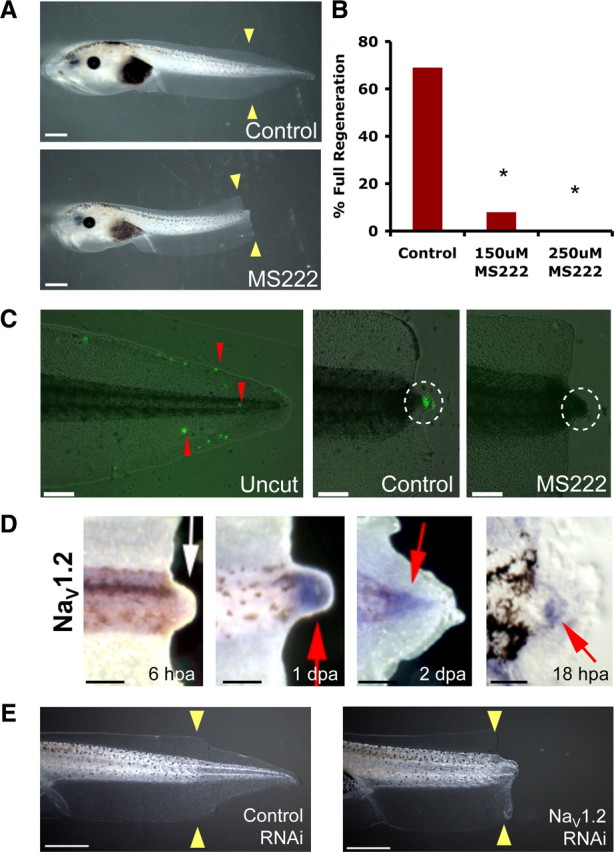Figure 1.

Sodium transport is required for tail regeneration. A, Control tails amputated at st. 40 regenerate fully whereas siblings treated with 250 μm MS222 fail to regenerate. B, Effects of NaV chemical inhibition on regeneration showing dose-dependent inhibition. C, Fluorescent indicator dye (CoroNa Green) of sodium flux (red arrows). Uncut tail has scattered fluorescence. Cut tail (24 hpa) shows strong sodium influx into the regeneration bud (white circle) in contrast to MS2222-treated buds. D, Whole-mount in situ hybridization for NaV1.2 in amputated tails. Regeneration bud (6 hpa) lacks NaV1.2 expression. By 24 hpa, NaV1.2 is expressed in the regeneration bud and persists until 48 hpa. A section through an 18 hpa regeneration bud reveals NaV1.2 in mesenchymal cells but not the wound epidermis. E, Control tails amputated at st. 40 regenerate fully but animals expressing NaV RNAi construct do not. Scale bars: A, E, 1 mm; C, D, 500 μm; D, far right, 100 μm. Red arrows, expression; white arrow, lack of expression; yellow arrows, amputation plane. dpa, Days postamputation. *p < 0.001.
